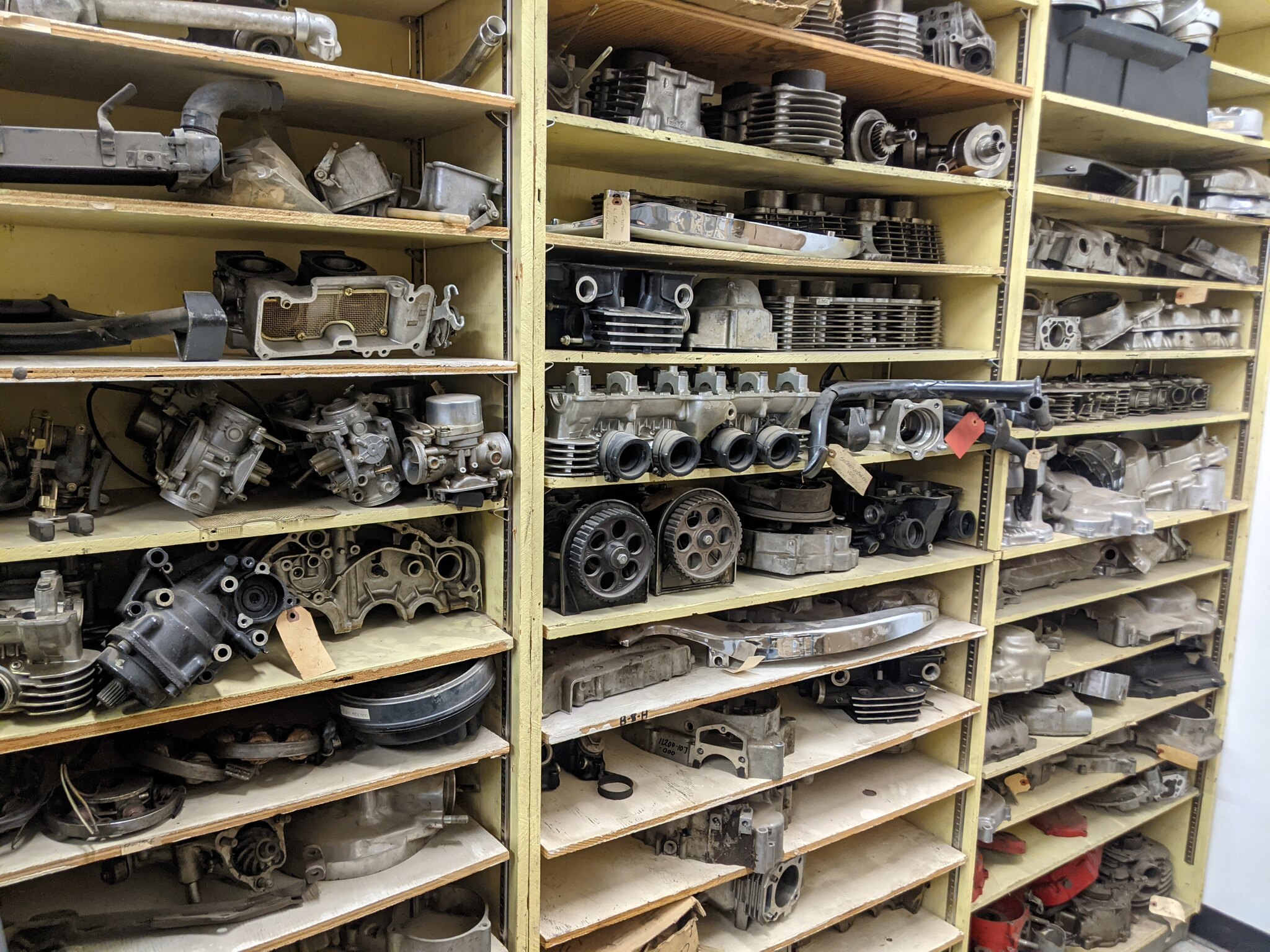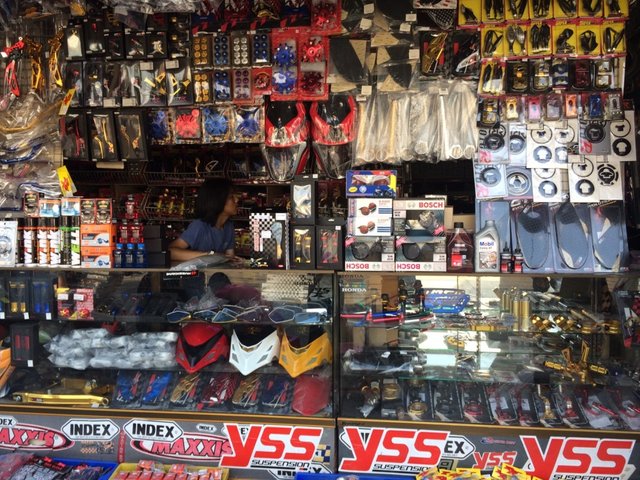Release Performance with Premium Motox Parts NZ Available Here
Wiki Article
Comprehending the Crucial Parts of a Motorcycle: A Comprehensive Guide for Lovers
For motorbike lovers looking to boost their riding experience and ensure their bikes run smoothly, understanding the essential elements of a motorbike is critical. Each element, from the engine's intricate workings to the crucial duty of the stopping mechanisms, not only influences performance but additionally safety and security and comfort.Engine Components

The camshaft plays a critical role in managing the timing of the engine's shutoffs, ensuring the accurate opening and closing essential for reliable gas and air intake, along with exhaust expulsion. This timing is important to keeping optimal engine performance and efficiency. Furthermore, the carburetor or gas shot system, relying on the motorbike version, is in charge of mixing air with fuel in the correct proportion for burning.
The air conditioning system, either air or liquid-based, functions to preserve the engine's temperature within operational limitations, avoiding overheating and guaranteeing durability - mx gear nz. Each component, meticulously designed and incorporated, adds to the seamless operation of the engine, specifying the motorcycle's power result and general efficiency
Transmission System
Essential to the motorcycle's capability, the transmission system makes sure reliable power transfer from the engine to the wheels. This system makes up a number of critical components, consisting of the clutch, transmission, and final drive, each playing a crucial function in translating the engine's power into motion. The clutch, typically operated by a hand lever, serves to disengage the engine and engage from the transmission, allowing for smooth equipment modifications and controlled acceleration.The transmission, usually described as the transmission correct, has a collection of gears that cyclists can by hand change with to adjust the bike's rate and torque outcome. These equipments are set up in a sequence that makes it possible for the motorbike to speed up smoothly and preserve optimal engine efficiency across various rates. Many bikes make use of a consecutive gearbox, calling for the biker to shift gears in a fixed order.
Braking Mechanisms
While recognizing the transmission system is essential to taking advantage of a motorcycle's power, equally important is the capacity to control and stop that power effectively, which is where braking systems enter play. Brakes are crucial for security and efficiency, giving the biker with the needed control to browse different terrains and conditions. Typically, motorbikes feature 2 kinds of braking systems: disc brakes and drum brakes.Disc brakes are extra widespread in modern-day bikes due to their remarkable efficiency. They consist of a brake disc, caliper, and pads. When turned on, the caliper presses the brake pads versus the spinning disc, transforming kinetic energy into warm, therefore slowing down the wheel. This system supplies better warm dissipation, constant efficiency, and improved stopping power, particularly in damp problems.
On the other hand, drum brakes, though less typical, are still discovered in some motorcycles. They function by pushing brake footwear versus the inner surface of a drum connected to the wheel. While generally less reliable in warm dissipation and stopping power, drum brakes are easier and extra cost-effective.
Understanding these braking systems' nuances allows riders to keep their motorcycles correctly and value the engineering that ensures effective and risk-free stopping.
Suspension and Guiding
Suspension and guiding systems are vital parts that dramatically affect a motorbike's handling and experience comfort. The shock absorber, containing forks at the front and shock absorbers at the back, absorbs roadway irregularities, boosting stability and control. Front forks, inverted or typically telescopic, compress and rebound to minimize effects, while rear shock absorbers keep tire contact with the roadway, vital for grip and safety.Guiding, centered around the handlebars, attaches the motorcyclist to the motorbike's directional control. The guiding head bearings make certain smooth operation, allowing accurate maneuverability. Appropriate positioning and upkeep of these bearings are essential for predictable steering response and reducing motorcyclist fatigue.
The suspension's adjustability is one more vital facet; preload, damping, and rebound settings enable customization to fit various riding designs and problems. This flexibility is vital you can find out more for maximizing performance, whether browsing metropolitan roads or tackling tough trails. Technologies like electronic shock absorber offer real-time modifications, boosting trip top quality across diverse terrains.

Electrical Systems
After making sure a smooth and regulated ride with effective suspension and guiding systems, focus turns to the electrical systems, an essential facet of modern-day motorcycles. These systems play a crucial role not only in starting the engine but likewise in powering numerous parts that boost the functionality and security of the motorcycle.At the heart of a bike's electrical system is the battery, which stores electrical energy essential for beginning the engine and powering complementary systems - mx gear nz. The generator or generator, combined with the rectifier-regulator, makes certain the battery continues to be billed while the motorcycle is in operation, transforming power right into electrical energy and maintaining voltage degrees
The ignition system, an additional critical component, is in charge of sparking the air-fuel mix in the engine's cylinders. Modern motorbikes usually make use of an electronic ignition system, providing higher effectiveness and dependability compared to typical systems.
Illumination systems, consisting of headlights, tail lights, and indicators, are additionally essential, guaranteeing exposure and safety for the cyclist. Extra electronic elements such as sensors, control devices, and shows add to sophisticated functions like gas shot management, anti-lock stopping systems (ABDOMINAL), and digital control panels, even more enhancing the riding experience.
Final Thought
A comprehensive understanding of a motorbike's vital components, including the engine, transmission system, stopping devices, suspension, steering, and electrical systems, is important for fanatics aiming to you can find out more enhance safety, performance, and convenience. Proficiency of these aspects allows for informed decisions pertaining to maintenance and upgrades, inevitably enhancing the riding experience. By integrating this understanding, motorcyclists can ensure their motorbikes operate at peak effectiveness and dependability, therefore making the most of both satisfaction and long life of their lorries.For motorcycle lovers looking to elevate their riding experience and guarantee their bikes run efficiently, recognizing the essential parts of internet a bike is paramount.Integral to the motorcycle's functionality, the transmission system guarantees effective power transfer from the engine to the wheels.While comprehending the transmission system is essential to utilizing a motorbike's power, just as vital is the capacity to manage and stop that power successfully, which is where stopping systems come into play. Usually, motorcycles include 2 types of braking systems: disc brakes and drum brakes.
A comprehensive comprehension of a motorcycle's crucial components, consisting of the engine, transmission system, braking mechanisms, suspension, steering, and electric systems, is vital for fanatics aiming to maximize comfort, safety and security, and efficiency.
Report this wiki page